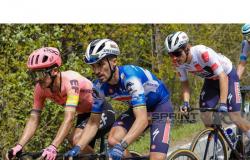CREMONA – “Now I can start being twenty-three again.” Alessia living with endometriosis. In a letter addressed to the Public Relations Office of the Asst of Cremona, she thanks the specialists who took care of her, finding a solution to his pain. Thanks to an experimental therapy proposed by the Neurosurgery of Cremona, she managed to “turn off” the pain and take back control of her life. On the occasion of World Endometriosis Day (28 March 2024), the young patient shares her experience and encourages women who face the same disease not to underestimate the symptoms and rely on specialized centers and professionals.
AN INVISIBLE DISEASE
«Endometriosis put my will to live on hold – she says -. I was overwhelmed by a pain that I couldn’t identify. She came from inside, attacking my insides, my abdomen and progressively my back and right leg. I couldn’t walk or sit: I stopped doing everything I did before, from daily activities to my social life. The most difficult thing was explaining it to others, feeling understood: how do you explain something that can’t be seen?”
In July 2021 the diagnosis arrived: endometriosis. Alessia turns to a specialized center for the disease, where she initially tries pharmacological therapy and then surgery. “I hoped I would feel better but that wasn’t the case, the pain got worse.” Two more are added to the first diagnosis: vulvodynia and pudendal neuropathyfollowed by other therapies but without good results.
TRAINED PROFESSIONALS
“Endometriosis is a chronic and silent pathology,” he explains Aldo Riccardi, director of the Mother and Child Department of Cremona. «Despite being gynecological in nature, it can affect multiple organs and systems, causing widespread pain that accompanies the woman at all times. We can consider it a social disease, because it also affects interpersonal relationships.” In Cremona, the diagnostic process starts from an accurate investigation to identify the nature and extent of the symptoms.
Doctor Aldo Riccardi
«To recognize it you need to know how to intercept it – adds Riccardi -. This is why it is important multidisciplinary comparison between trained specialists, able to read the symptoms.” Diagnostic tests may include nuclear magnetic resonance imaging (in collaboration with Radiology, directed by Laura Romanini), to study the spread of the disease. «In addition to drug therapy, surgery can be a therapeutic avenuealthough sometimes risky and inconclusive, recommended only when endometriosis is extremely disabling.”
NEUROMODULATION “TURNS OFF” PAIN
«When you think that everything is useless, something revolutionary arrives», continues Alessia. «Medullary neurostimulation was my revolution».
At the Asst of Cremona, antalgic neuromodulation is already in use to treat nervous or spinal pathologies. As he explains Antonio Fioravanti, director of Neurosurgery and the Department of Neurosciences: «It is a treatment technique that uses radiofrequency on the nervous system to improve painful symptoms. From a practical point of view, it involves installing a neurostimulator at the dorsal epidural level, which uses electrical or magnetic impulses to “deceive” the neuropathic pain pathways, preserving the other sensitivities”.
Doctor Antonio Fioravanti
For the first time, this therapeutic method has been applied to treat endometriosis pain. “There is nothing similar in literature,” he adds Patrizia D’Auria, neurosurgeon of the Cremona team. «When I met Alessia, we decided to try this path by expanding spinal neurostimulation to control abdominal, pelvic and lower limb pain. It was a challenge for her and for us, to face together”.
After an initial trial phase to evaluate functioning and modulation, the intervention was planned to install the neurostimulator, which today accompanies Alessia in resuming daily activities. «The results are very encouraging – adds D’Auria -. Alessia is much better, she has learned to manage the device independently, which can be recharged and adjusted as needed».
«THANKS TO MY DOCTOR»
«Three months after the operation – confirms Alessia – I am able to do things that were previously only a memory, such as going to university, walking or going to the disco with my friends. My heart is full of joy, even if after so much suffering the fear remains that all this could start again».
The young patient expresses thanks to the specialists who took care of her: «I have never met anyone who trusted me, who believed in my illness and who was looking for a concrete way to help me. It is necessary to recognize those who work with so much love and truly seek the patient’s good. Many women have suffered and continue to suffer from these pathologies, I would like the opportunity given to me not to be an exclusive one.”










